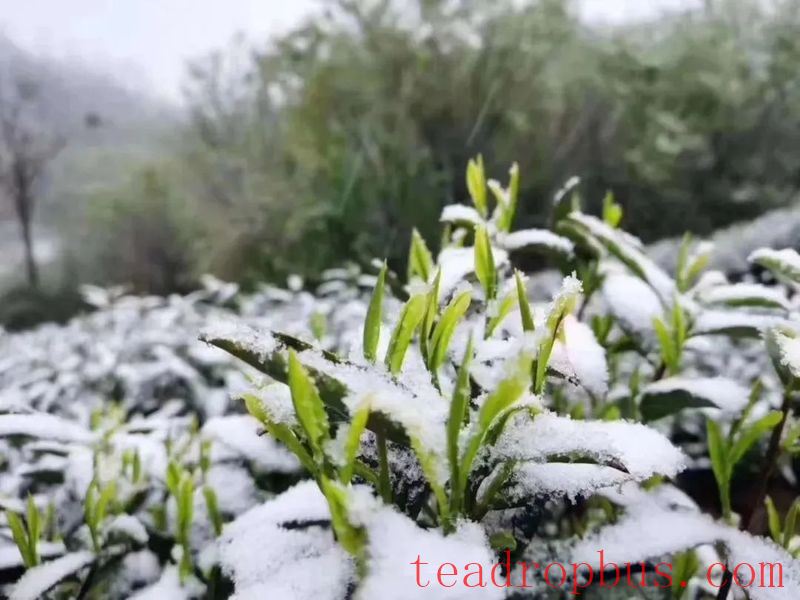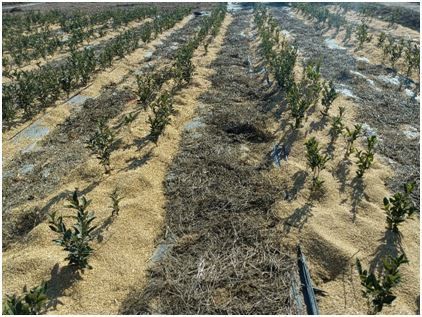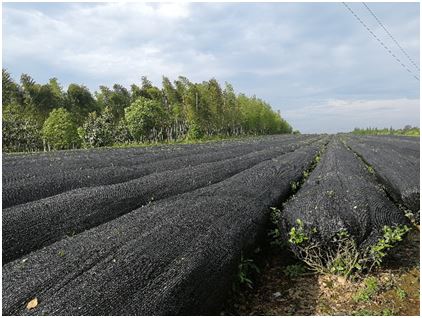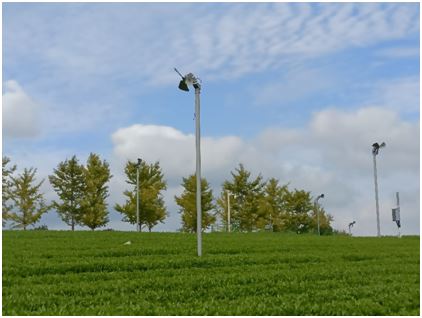Recently, Anhui Province has experienced heavy snow and significant temperature drops that may harm some Tea gardens and affect tea production, particularly in gardens north of the Yangtze River, those at higher elevations, or those located in windy areas. Therefore, proactive preventive and response measures should be taken to guard against frost damage. For this reason, the Tea Research Institute of the Anhui Academy of Agricultural Sciences proposes technical measures for tea gardens to cope with low temperatures and snowy weather, which are provided for reference by tea producers.

I. Emergency Measures for Tea Gardens Affected by Low Temperatures, Snow, and Frost
1
Burying Soil for Winter Protection
Burying soil for winter protection is a simple yet effective method to prevent freezing, especially suitable for 1- to 2-year-old tea plants. The process can be divided into 2-3 stages: first, ensure the tea plants are well-watered before winter, and when the surface soil dries, perform the first soil burial in mid-to-late November, covering half the height of the saplings. In the final burial, keep 2-3 true leaves exposed above ground. When spring temperatures stabilize, remove the soil in 2-3 stages: first, around the Spring Equinox, remove half the buried soil; second, before the Qingming Festival, completely remove all covered soil.
For mature tea gardens prone to frost damage, combine fertilization with deep cultivation after the end of the tea season during summer or autumn-winter, and cover the base of the tea plants with 10-15 cm of soil from the surrounding area to protect the root neck from freezing.
2
Straw Mulching Between Rows
For young tea gardens or productive gardens with large areas of bare soil, lay down a layer of straw, rice husks, crop stalks, weed-free grass, non-woven fabric, or black film between rows, about 8-10 cm thick. This can effectively raise soil temperature and block cold winds.

3
Covering Canopy
Before the onset of low temperatures, directly cover the canopy with non-woven fabric or shade nets to protect against freezing. For 1- to 2-year-old tea gardens with a canopy height under 30 cm, construct small arch-shaped shelters about 50 cm high and 80 cm wide. For 3- to 4-year-old gardens with a canopy height of 30-50 cm, erect medium-sized arches about 1.3 m high and 3.6 m wide, covering every 2-4 rows. Installing arches provides better coverage than direct covering.
When using shade nets or other materials, handle them gently and cover the canopy from between the rows of tea plants. Avoid dragging the coverings over the canopy as it could cause mechanical damage worse than frost. Remove canopy covers promptly after the cold period to prevent light obstruction and hinder tree growth. In northern Anhui, remove the covers in early March; in southern Anhui, do so earlier.

4
Windbreaks for Freeze Prevention
For young tea gardens, create straw curtains using rice straw or weeds. Dig shallow trenches (10 cm deep) on the north side or windward side of the tea rows, 30-50 cm away from the tea plants. Place the straw curtains in these trenches, leaning towards the tea plants, and secure them with soil. The windbreaks should extend 20 cm above the tea plants. Construct these windbreaks between the beginning of winter and the start of light snow (mid-November). Windbreaks can also be combined with soil burial.
For tea gardens in northern Anhui or those susceptible to dry, strong winds, erect windbreaks about 2 m high around the garden perimeter or on the north side to reduce rapid water loss due to strong winds and prevent or mitigate frost damage.
5
Blowing Air to Prevent Frost
Scaled tea gardens equipped with frost fans can install them 6-10 meters above ground. On clear, windless, cloudless, and cold nights, turn on the fans to disturb the air in the temperature inversion layer near the ground, forcing warm air above the tea plants. This can effectively raise the canopy temperature and promote bud and shoot growth. The effective coverage area varies depending on terrain; one 3 kW fan can protect 1.5 mu of flat land tea garden, and generally, installing 30-40 fans per hectare is ideal. For sloping land, increase the density. In sloping tea gardens, tilt the fan heads downward from the mountain side toward the valley; in flat and gently sloping gardens, tilt the heads in the direction of airflow before sunrise, at an angle of 45°. Typically, set the fans to automatically activate when ground-level temperatures fall below 4°C, usually starting around 7 PM and stopping when temperatures rise the next morning. This measure is effective in preventing late frosts in low-lying areas in early spring, but severe frost damage can still occur at very low temperatures even with frost fans.

6
Water Spraying to Prevent Freezing
Tea gardens with sprinkler systems can spray water continuously onto the tea plants when temperatures drop to around 0°C, until dawn when temperatures rise. Alternatively, if ice forms on leaves or branches, immediately spray the canopy to wash off the ice and reduce freeze damage. The spraying intensity is 4 cubic meters of water per hour per 1,000 square meters.

7
Biological and Chemical Protection
(1) Spray Anti-Freeze Agents. Three to five days before the onset of disastrous weather, choose a day without rain to apply plant immunomodulators, enhancing the tea plants' immunity and activating their anti-freeze factors to strengthen their natural resistance to cold, thus providing some protection against freezing.
(2) Biological Protection. The presence of ice nucleating bacteria on leaves can exacerbate frost damage. Therefore, using bactericides or antibiotic solutions can reduce and inhibit the number and activity of ice nucleating bacteria on the leaf surface, helping to prevent frost damage.
8
Snow Management
For tea gardens covered with arches, clear snow promptly to prevent the collapse of the arches. For tea plants with long shoots, heavy snow can break branches, so clear snow promptly. For mountain tea gardens, winter snow can help protect tea plants from low temperatures, but once the temperature rises, clear the snow from the canopy to reduce the effects of melting snow lowering temperatures and repeated freeze-thaw cycles. However, spring snow, especially after buds have emerged, should be cleared promptly.
9
Drainage Trench Maintenance
For tea gardens prone to waterlogging, clear drainage trenches before the arrival of heavy snow and severe cold to ensure melted snow can flow out of the garden smoothly, preventing soil freezing that can damage roots.
II. Techniques for Restoring Frozen Tea Gardens
1
Timely Pruning
After severe frost damage, parts of the branches and leaves lose vitality, necessitating the removal of dead branches to prevent further spread of dead tissue and to stimulate the sprouting of buds below the pruning cut.
The best time for pruning is when early spring temperatures have stabilized and there will not be another severe frost. Pruning too early risks a “late spring cold” that can cause additional freezing damage, while pruning too late can worsen branch dieback and prolong recovery. For gardens prone to frost damage, if canopy leveling is necessary, it should be done before the Spring Tea sprouts, rather than after